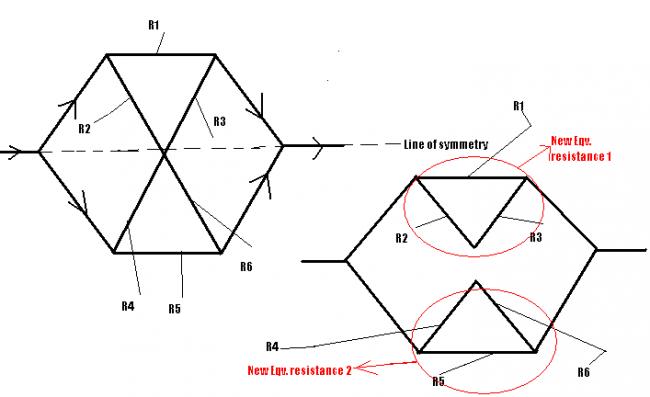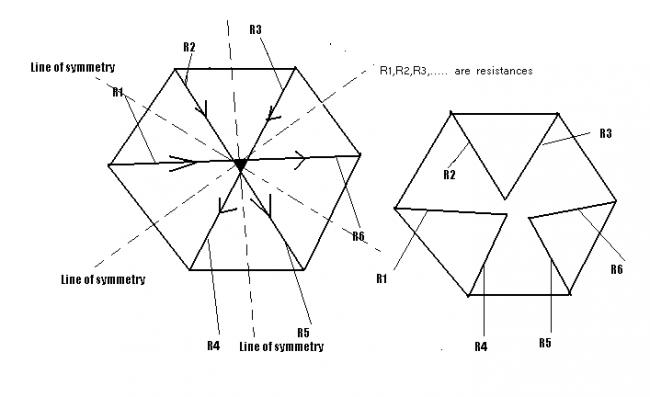 49
49well now the above law shows whenever there will be a changing electric field there will be magnetic induction or in better words when there is a changing electric flux in free space, a magnetic field is created(relate with electromagnetic induction they are similar)
so both rotation and revolution HAS to create magnetic field!!
Now, clockwise spins have a magnetic effect and an anticlockwise spin has exactly same magnetic effect but in just opposite directions...(Electrons are subject to Pauli's Exclusion Prnciple and have spin ±12 and are fermion particles)
also accordind to hund's rule of maximum multiplicity, the electrons first fill in ALL the degenerate orbitals with SAME spin and after all the degenerate orbitals are filled that the opposite spin filling starts...
again...those which have unpaired electrons are called paramagnetic and those having all paired electrons are called diamagnetic...paramagnetic substances having unpaired spins are capable of orienting themselves with any externally applied magnetic field...opposite is the case with diamagnetic...
Iron has a high number of unpaired electrons...i.e. FOUR and hence forms a HIGHLY para-magnetic group called FERROmagnetic...
the best ferromagnetic substance by my logic would be Chromium(3d54s1) with SIX unpaired electrons(i am excluding f block elements)
but since iron is highly abundant and has fairly large ferromagnetic nature, it and its alloys are widely used for making magnets!!!
a magnet not only attracts iron, but it also attracts all other ferromagnetic substances and paramagnetic substances...
in this regard it is to be mentioned that para magnetic substances and ferromagnetic compounds can be ROUGHLY distinguished by saying paramagnetic substances contain 1-2 unpaired elecs and ferro has 4-5-6 and so on!!
Magnets are MADE of iron coz as earlier stated for abundance and for 2 other properties that iron has higher permeability and lower retentivity(iron is used to make most temporary magnets while steel with lower permeability and higher retentivity are mostly used to make permanent magnets!!)
 49
49# 14 is now open as a googly from ATGS 16!!
http://www.targetiit.com/iit-jee-forum/posts/googly-from-atgs-16-17237.html
lets see whats the general idea about it!!
ek secret batata hoon:: the question is a very silly one and so is the answer!!
 1
1okey dokey thnxx for the help
 49
49@Sanchit : i hope reading HC V will help u in ur doubts!
yeah J is the current density
will write at night...bye!
 1
1u need to study magnetis before it pemebeality=B/B0 where b is the new magneitc field since the material has entered and retentivity is the amount of magnetisation left in the magnet when the magnetising field has been removed..........
 1
1iron has higher permeability and lower retentivity(iron is used to make most temporary magnets while steel with lower permeability and higher retentivity are mostly used to make permanent magnets!!)
can u plzz explain wht does this means ,,i mean wht to do with permeability nd wht is retentivity.........
 1
1THNXXXXXXXXXXXX shubhmoy really thnxx for the tasty answers .....@post no. 14 i dunnno the ans yaar[2][2]........hey can u plzz temme in post no. 11 J is the current flowing per unit area na!!!!!!!!!!
 49
49Returning to the ORIGINAL question of the THREAD!!
look u can do 2 approaches to the problem!!
FIRST!!!
by symmetry u try to find out points with same potential !!
now we tingle our bacic concept to know that points of same potential THOUGH CONNECTED will never have any current in the bridge between them...
also we know that 2 points which are NOT connected will have no current between them...
so in symmetry what we basically do is try and find out all the equipotential points...now if the points are connected, we can detatch them(in any case no current flows through them) or if the points are NOT connected, we SORT them(in any case there is going to be no current!!!)
For simplest example, we consider a WHEATSTONE BRIDGE!!
The 2 bridged points whether sorted or detatched will always give the same equivalent resistance(try out yourself!!)
 49
49For a and b refer to H C Verma chapter: Permanent magnets...
there the thing is explained better that my patience would ever permit me to write!! :)
 49
49for h)
come-on man! now do not ask this question....
well i ask u a similar question...if u know the answer of the question I ask then u ll be able to answer ur doubt number h) urself!!
the question is...
In electron's frame of reference, attractive electrostatic force is balanced by centrifugal force [don't chuckle to read that word as many including me often do ;)] and thus doesnot move! (remember we are in electron's reference frame!)
NOW we change reference frame to the nucleus, the only force acting on it is the force of electrostatic attraction due to eletrons and STILL the nucleus doesnot accelerate towards the electrons!! the question is WHY??? :P
 49
49i THINK that c.d.e.f.g are answered!!
 1
1Ya .... we have symmetry method but .... it is not an interesting one though it shortens a problem and should be rather used in competitive exams.
 49
49well, a changing electric field or a flowing charge (which causes change in electric field) induces a magnetic field...
the second part is very obvious as given by ampere's circuital law or biot-savart's law...
but consider a case...
When an uncharged capacitor is connected across a battery, there flows a current and supplies charge to one plate of capacitor...also the other connecting wire, conducts current and takes away charge from the other plate of capacitor...
here it must be noted that no charge flows between the two capacitor plates but by observation, we find a magnetic field being created in that region...
this observation was historically used by maxwell to redefing ampere's circuital law!!
the circuital law stated,
\oint_{c}^{.}{B.dl}=\mu_o \int\!\!\!\!\!\int_{A}^{.}{J.dS}=\mu _oi
Maxwell restated it as,
\oint_{c}^{.}{B.dl}=\mu_o \int\!\!\!\!\! \int_{A}^{.}{(J+\epsilon _o\frac{\partial E}{\partial t}).dS}
where, \int\!\!\!\!\! \int_{A}^{.}f(x)dx mean surface integral(do not get confused by double integral sign)
 1
1although my first one is not yet cleared completely i wanna add a new one..........so here it goes:::::
2)i was thinking tht we have read in the magnetic effect chap tht a flowing charge creates a magnetic feield around it .........so my ques is
a)does a magnet have current in it??????
b)if no then how does there comes the magnetic field????????
now if u have elaborated this now plzz explain tht
c)why mainly magnets r made of iron ( or nickel cobalt nd sum rare alloys)???????nd
d)why a magnet attracts iron not other metals????????
for first one i thought like this tht the electrons in iron r moving with some spins which produces magnetic field ..but then the many ques arises in mind tht
e)is the magnetic field is due to rotation or revolution of electron or by both,
f)does rotation of charge produces magnetic feield??????? nd
g)if the field is due to rotation then there must be corresponding electrons in iron atom which are having opposite spin which cancel out the magnetic field produced????????
h)if the field is due to revolution then there must be a net magnetic force on protons which will through the nucleus in downward or upward direction?????????
phew!so many doubtss[1][1][1]
one more
 1
1iska matlab jitna current R2 mein se jayega utna hi R3 mein se pass hoga hmm thnxx bhaiiya got it!!!!!!!!can uu plzz explain a method in which we earth a point in the ckt(got to noe abt it yesterday).............
 1
1Hey Sanchit .... sorry but the previous uploaded image was wrong ... my mistake.
The new corrected image is given below:

Current entering through R1, R2, R3 is same as current entering through R4, R5, R6 where R1=R5; R2=R4; R3=R6. So the upper part along line of symmetry can be treated as the mirror image of the lower part.[ Note: potential diff. along the terminals is common to both upper and lower part. ] Hence the figure can be redrawn as shown in second figure.
 1
1The figure is symmetric to the 3 lines of symmetry.
The new figure can be drawn with 3 new equivalent resistances constituted by R1 and R4; R2 and R3; R5 and R6.
 1
1can u plzz explain with an example bhaiiya...nd duu noe ne other method?????
 1
1It is based on the concept of the current law of KIRCHOFF.
Current entering a junc.=Current leaving the junc....
 1
1Personally I don't like the method.

